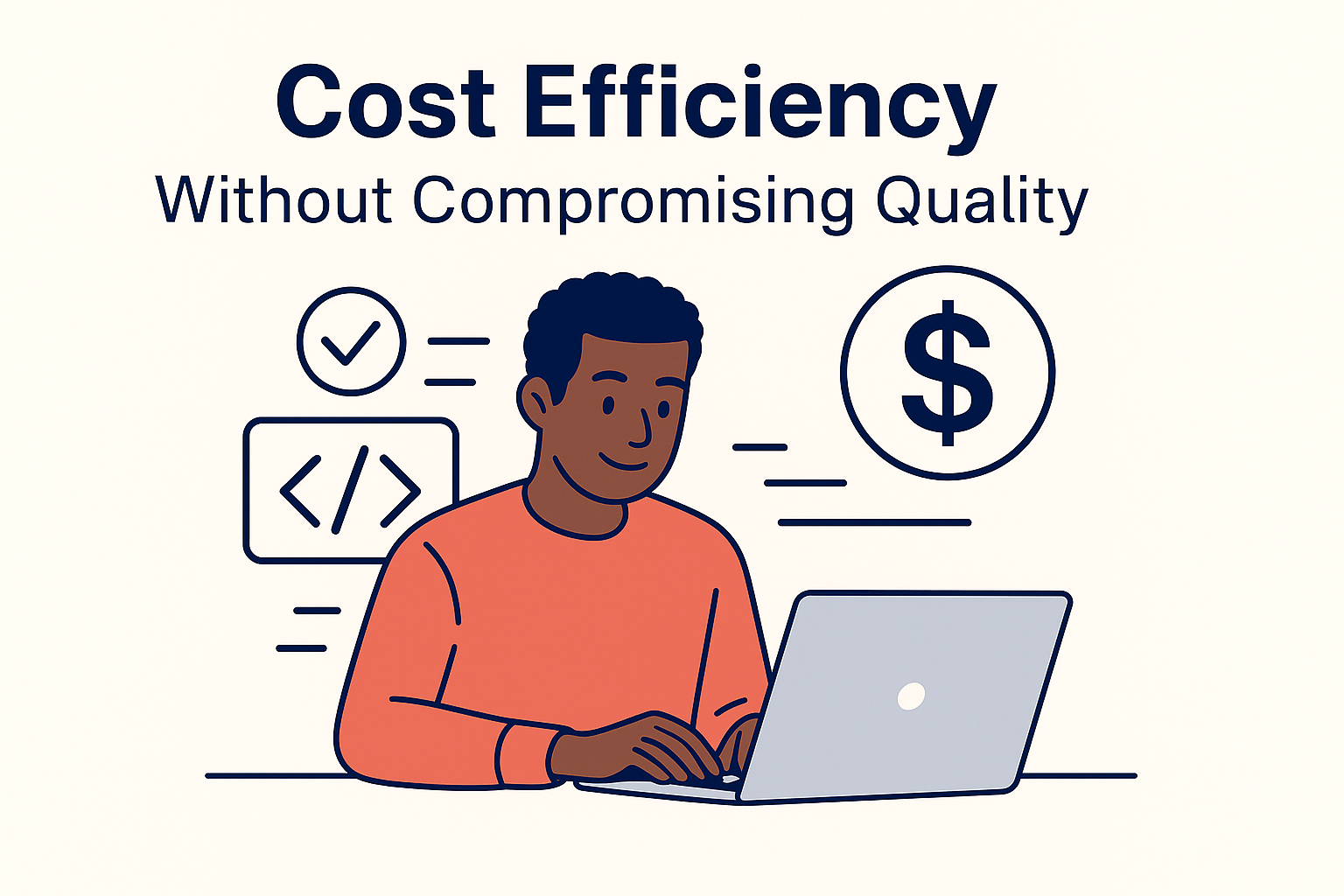Estimated reading time: 9–10 minutes
In the fast-moving world of software development, hiring decisions can make or break your product roadmap. While the allure of hiring senior developers is strong—deep experience, leadership potential, and technical authority—many companies, especially startups and growing businesses, are realizing that mid-level developers often offer a more strategic and scalable option. This article explores the tangible benefits of hiring mid-level talent and the situations where it can even outperform senior hires.
Table of Contents
- What Defines a Mid-Level Developer?
- Cost Efficiency Without Compromising Quality
- Speed and Adaptability in Execution
- When Mid-Level Outperforms Senior Developers
- Growing with Your Team: Retention and Culture
- Realistic Workloads and Scalable Contribution
- Avoiding the Pitfalls of Overqualification
- When Senior Developers Are Still Worth It
- Final Thoughts
1. What Defines a Mid-Level Developer?
A mid-level developer typically has 3–5 years of professional experience, a strong grasp of core programming principles, and a track record of contributing meaningfully to real-world products. They are no longer learning the ropes like juniors, yet they haven’t reached the plateau of strategic oversight and architectural decision-making that senior developers often bring.
What makes mid-level developers particularly appealing is their balance:
- They’re skilled enough to work independently.
- They’re motivated to grow, adapt, and improve.
- They’re less expensive and easier to manage than senior developers who may require a team or leadership role.

2. Cost Efficiency Without Compromising Quality
Hiring senior developers in the U.S. can cost $180K–$250K+ per year. Mid-level developers, by contrast, often come in at 40–60% of that cost—especially if you’re hiring remotely from regions like Latin America or Eastern Europe.
For businesses trying to stretch every dollar, hiring two strong mid-level developers for the price of one senior can be a game-changing strategy. You increase output, reduce dependency, and often get better team coverage—without sacrificing the quality of code or delivery.
💡 Looking to scale affordably? Check out our guide: https://idelsoft.com/blog/tpost/3u4dn5au51-how-to-hire-developers-from-latam-and-sav
3. Speed and Adaptability in Execution
Mid-level engineers are often in their most productive and versatile phase. They're used to context switching, can pick up new tools quickly, and are less rigid about “how things should be done.” While senior developers may push for process-heavy approaches or long-term architecture discussions, mid-levels are typically focused on building and shipping.
In agile teams or MVP-driven startups, this speed can be crucial. Mid-level developers can:
- Move fast without waiting for approvals.
- Adopt existing frameworks instead of rewriting everything.
- Prioritize delivery over debate.
This makes them an excellent fit for product-driven teams that need results fast—especially when managed by a strong tech lead or CTO.
4. When Mid-Level Outperforms Senior Developers
There are specific cases where mid-level developers outshine their more experienced counterparts:
- Rapid Prototyping: Mid-levels are hands-on and pragmatic. They don’t get bogged down in abstract design debates.
- Defined Scope Projects: If your team already has established architecture, mid-level devs can plug in and deliver without oversight.
- Scaling Delivery Capacity: When you need to increase throughput without multiplying cost, mid-level additions are ideal.
- Team Extension Models: If you already have a strong senior engineer, pairing them with 2–3 mid-level devs can create an efficient squad.

5. Growing with Your Team: Retention and Culture
Mid-level developers are more likely to be in a growth mindset, meaning they value mentorship, skills expansion, and collaboration. That makes them culturally sticky:
- They appreciate clear guidance.
- They’re eager to contribute and grow into leadership roles.
- They’re less likely to leave quickly if the work is meaningful and the path is clear.
This also means lower turnover, which is particularly important for early-stage companies building core teams. You’re not just hiring for execution—you’re shaping future leaders.
According to Harvard Business School, companies that actively develop talent see better retention, performance, and engagement.
According to Harvard Business School, companies that actively develop talent see better retention, performance, and engagement.
6. Realistic Workloads and Scalable Contribution
Unlike senior developers who may lean toward macro-level design or project ownership, mid-level developers excel in delivering repeatable, tactical value. Give them a task, provide a few boundaries, and they’ll likely deliver. This makes it easier to scale without micromanaging or over-relying on high-cost decision-makers.
Mid-level devs thrive under:
- Clear specifications
- Active sprints
- Code review cycles
- Task ownership without bureaucracy
This makes them ideal for feature development, QA integrations, and iterative improvements.
7. Avoiding the Pitfalls of Overqualification
Hiring a senior developer when you don’t actually need one can cause more harm than good:
- Misaligned expectations: They may want strategic input you’re not ready to offer.
- Over-architecture: They may rebuild systems unnecessarily, slowing down execution.
- Cultural friction: They might resist decisions or management styles that don’t match their past experience.
Mid-level developers, by contrast, are often more practical and adaptable, especially in flat team structures or startup environments.
8. When Senior Developers Are Still Worth It
Of course, senior developers have their place. You absolutely need them when:
- You’re building complex infrastructure or designing systems from scratch.
- You need mentorship or architectural leadership.
- You lack a CTO and need someone to set the technical direction.
In these cases, one senior developer supported by a few strong mid-levels can be more effective than a team of seniors stepping on each other’s toes.
9. Final Thoughts
Mid-level developers are often the most underappreciated asset in tech hiring. They offer a powerful combination of affordability, capability, and adaptability—making them ideal for startups, lean teams, and growing businesses looking to scale efficiently.
Instead of defaulting to senior hires, take a strategic look at your actual needs:
- Are your systems already established?
- Do you need more delivery power than leadership?
- Are you trying to scale fast with limited budget?
If the answer is yes, then hiring mid-level developers might be the smartest move your company can make in 2025.
Looking to scale more efficiently? Connect with iDelsoft.com! We specialize in developing software and AI products, while helping startups and U.S. businesses hire top remote technical talent—at 70% less than the cost of a full-time U.S. hire. Schedule a call to learn more!





